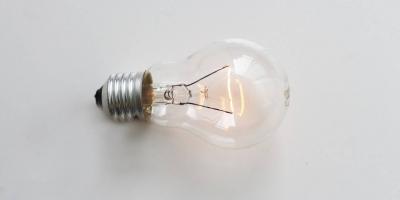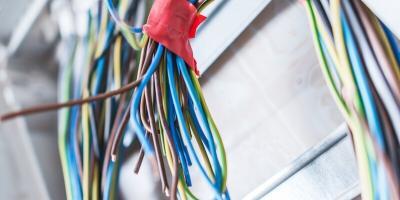We mostly rely on electricity for our daily activities. Computers, refrigerators, air conditioners, and mobile devices use electricity to work. But you cannot avoid natural hazards such as strong winds, lightning strikes, and storms to cause power outage in your neighbourhood.
Playing games in the dark might be fun, but it becomes a real hassle when the power outage lasts for hours or even days. That’s how electric generators come in handy during this unwanted situation.
Generators are temporary power supplies that can light your house and turn on your appliances during power outages. There are three types of generators — portable, inverter, and standby.
Portable generators run on fuel, which can transmit limited electricity for essential home devices. Meanwhile, the inverter generator supplies voltage more efficiently because it adjusts its engine according to the required voltage needs. However, it can only power up limited appliances. Lastly, standby generators connect to utility poles to detect a power outage and automatically turn on seconds after the interruption occurs.
Out of these three, it is the best choice to install a standby generator. It is costly but can give a large power output that can turn on all of the appliances and devices in case of a blackout. These advantages might convince you more about why you should install standby generators for your home.
Advantages of a Standby Generator
Standby generators power up automatically.
When a power outage comes, they turn on automatically or through a remote. You don’t need to walk a few metres to put fuel and start the generator anymore as they have their natural gas connection. Moreover, when you are on vacation, no need to worry about robbers since standby generators can reboot your security system to keep your home safe.
Standby generators connect to the utility pole.
They connect to the utility pole through a transfer switch to detect a power outage and disconnect to the pole. In this way, they could also protect your home from a power surge or the sudden change in the flow of electricity that damages your appliances. After the power comes back, they don’t turn off immediately so they can stabilise the power voltage required for your home – 230V in Australia’s case.
Standby generators turn on high wattage devices.
No need to concern yourself from being bored and food spoilage because they can give you electricity for a few days. A regular house needs 5kW to 7kW of power to maintain essential needs. But a standby generator can supply power from 10kW up to 40kW, which is enough to run your house for a long time.
Standby generators send system alerts.
They can run a system diagnostic weekly and send system alerts to you or your electrician to check if a problem occurs and needs repair immediately. Through this, it ensures the safety of your family from accidents related to your generator.
Installation Process
Installing a standby generator requires professional work, so call for plumbers and electricians to plan it carefully according to your preference.
- Get the necessary permits for electrical and plumbing work.
- Make sure to place your generator at least 1.5 metres away from doors and windows.
- Set-up a concrete base, and secure the generator on this base.
- Hire plumbers and electricians to connect gas lines and electrical lines, respectively.
Cost of Standby Generator Installation
Standby generators are expensive. But in the long run, it will help you to minimise costs from electric billing and necessary repairs because they can also protect your house from a power surge.
- Standby Generators
Standby generators cost depending on their expected output wattage. You can choose your standby generator by estimating your average power consumption for a day. Below are the estimated costs:
| Power Outage | Estimated cost range |
| 7-10kW | $2000-$4000 |
| 12-20kW | $4000-$12000 |
| 22-45kW | $9000-$15000 |
- Transfer switch
It functions as a way to disconnect your electric circuit from the utility pole and connect the generator to power your home. It usually costs from $500 to $900.
- Installation Labour
Installation requires electricians to connect your electrical wiring and set-up the unit itself, and plumbers to connect your generator to a gas line. Their combined labour cost averages from $200 to $700, depending on how complex the connection will be.
Conclusion
Installation of standby generators is on the rise because it gives the edge in terms of convenience and safety measures to protect your appliances and devices when power outage comes. Its cost might be expensive, but in the long run, you can reduce your cost on repairs or avoid buying a new appliance unit when a power surge damages them.
We at Gordon Powers can install your standby generators for you to enjoy electric privileges when a blackout happens. We can guide you from planning on what unit you should purchase, up to its maintenance. All at an affordable price! Don’t hesitate to call us at (02) 9199 7480 or visit our book an appointment now.










